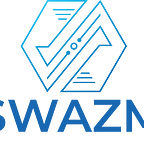How Does Blockchain Improve Operations in Supply Chain and Procurement Processes
1. Business Profitability and the Supply Chain Infrastructure
“How to optimize the cost of processing in order for the business to be profitable?”, “Did the supplier update the delivery data correctly?”, “Will the receipt of the goods match the order we made?”
These are all types of questions going through a Purchasing Manager’s head on a day-to-day basis. The bigger the operations, the bigger the amount of data that needs to be kept under tight management, in order to successfully implement the overall strategy.
For a business to make a profit, the cost of goods procurement needs to be lower than the amount you sell the goods at retail for, minus the costs that are associated with processing and selling them. The Procurement Process is the one of getting the goods you need, while the supply chain is the larger infrastructure needed to get you those goods. It’s a network made out of manufacturers, suppliers, and logistics providers that are needed to get a certain product to the end consumer, the business customer.
2. Aiming Towards a Transparent & Streamlined Supply Chain
Along all of these processes, there are many node points on which problems may happen. In order for it to be streamlined, operations need to be transparent and based on mutual trust, not to mention attention to specific details such as contractual terms, prices, budgets, quantities, document matching and last but not least, payments.
With the changes happening in our society, there is an increased digital data-driven process adoption, as emerging technologies can effectively increase efficiency and profitability for businesses, by providing a transparent and streamlined modern procurement process. The supply chain is the act of overseeing and managing a supply chain in order to ensure it’s operating at its best, as well as by following ethical business practices.
3. How Can Supply Chain Benefit From Adopting Blockchain
An easy way to understand blockchain technology and decentralization is by thinking about Google Docs vs Office Suite. Not so long ago we used to send an Excel document back and forth to exchange edits and come up with a final draft. Google Docs allows for storing the draft in the cloud and multiple editors working on it at the same time, while the document updates itself. Within global businesses, there are remote and shared hard-drives, functioning in a similar fashion, providing multiple points of access to all the team members involved in a process or operational flow.
The blockchain is an ever-growing database having millions of records stored by multiple users at the same time, anyone having the ability to edit and check the information at the same time and be in the know of what the last edits were and how they influence the main “document”. Its ways of working assure a safe and private way to exchange information, as well as making sure all the data actualizations are confirmed and registered on a virtual ledger using a specific cryptographic code. All the data cannot be modified without the network’s approval.
Smart Contact Benefits — Transparency and automation of contractual conditions
Adopted by businesses, they can be customized to include multiple operation centers across the entire supply chain, having the value and terms fully integrated within the entire network, and the execution of the conditions at each stage recorded against the contract and fully visible to the entire system. Multiple operation centers can be registered, including buyers, vendors, warehouses, payment entities, etc. Contractual conditions are automatically executed and registered on the blockchain and made available to all the stakeholders within the network.
Enhanced PO Management — Faster 3-way Matching and Modifications
Integrating blockchain within the supply chain facilitates accurate order validation and approval, secure invoice processing and faster 3-way matching and enhanced request-to-receipt processes. Changes can be made available on the entire network, so all participants can be aware of them and take the appropriate decision, optimizing the entire business process.
Supply Chain Visibility & Traceability — Supplier Management
The buyer will be able to trace all goods throughout the purchasing cycle and audit trails for each order will become easily verifiable. All the supplier management details will be recorded in each blockchain transaction, registering the process in minute detail. Purchase managers will be able to analyze, optimize and increase business profitability by having all the data kept in a safe and transparent system that leaves no room for errors.
Fraud Prevention — Invoice Processing and Payment Confirmations
Preventing fraud is one of the key aspects of an efficient supply chain process. Keeping all transactions safe and according to the established contractual conditions keeps budgets in check, helps reduce costs and last but not least, provide a better product for the end consumer.
Blockchain technology can help monitor and mitigate risks in real-time while reducing the difficulty in tracking documents, payments, deliveries, and vendors. By providing ledger trust and transparency, the multiple verifications ensure the harmonizations of suppliers with their customers, the buyers.
Ultimately, the end goal of blockchain adoption within the supply chain and procurement processes is to decentralize operations and bring all the operations on digital platforms.
About Swazm
SWAZM is the next-generation decentralized storage and compute platform, designed to enable horizontal scaling of distributed applications. SWAZM facilitates effective decentralization by creating a new complete infrastructure solution with a reliable transfer network, storage capabilities, and compute containers. Tailored solutions aiming to improve your decentralized project.
